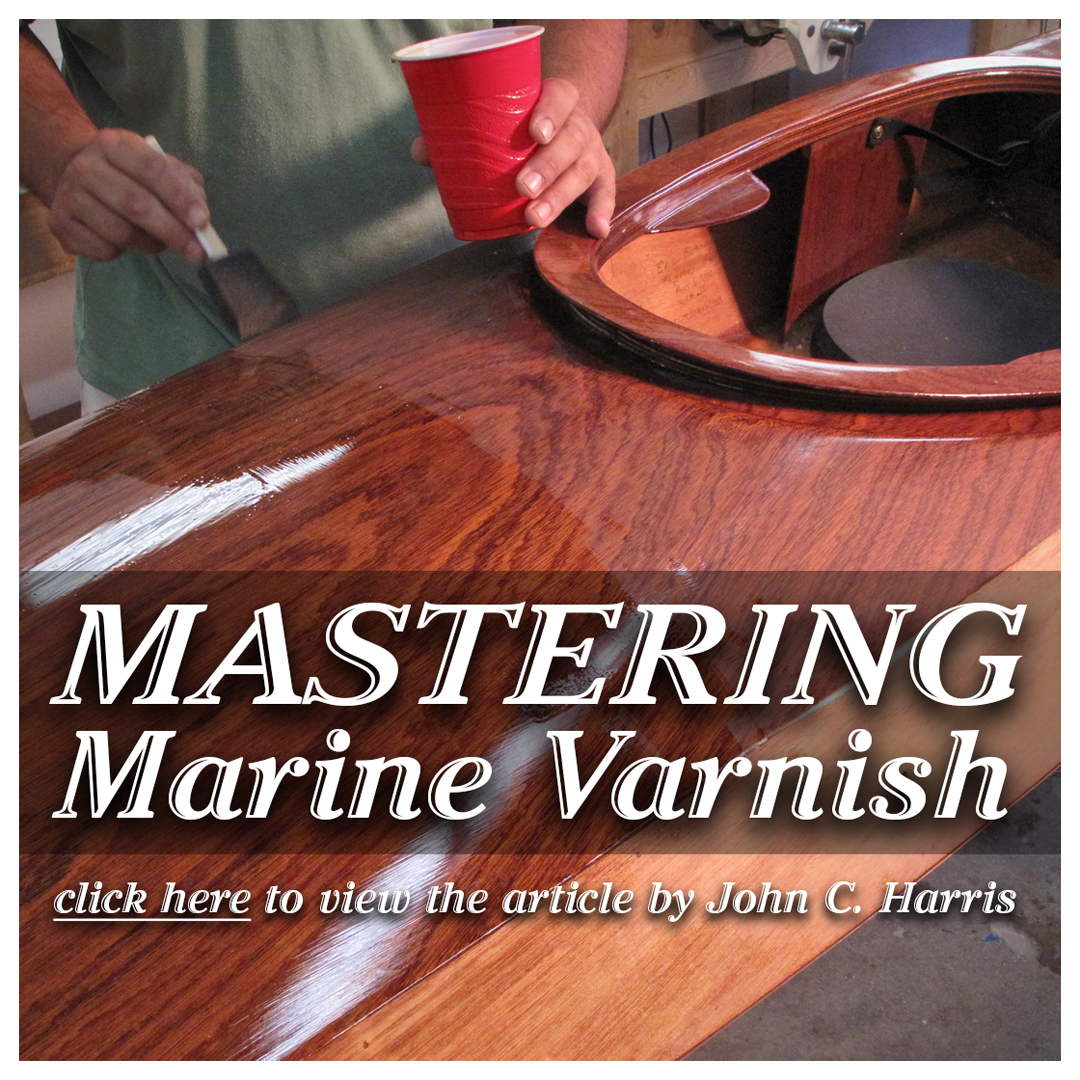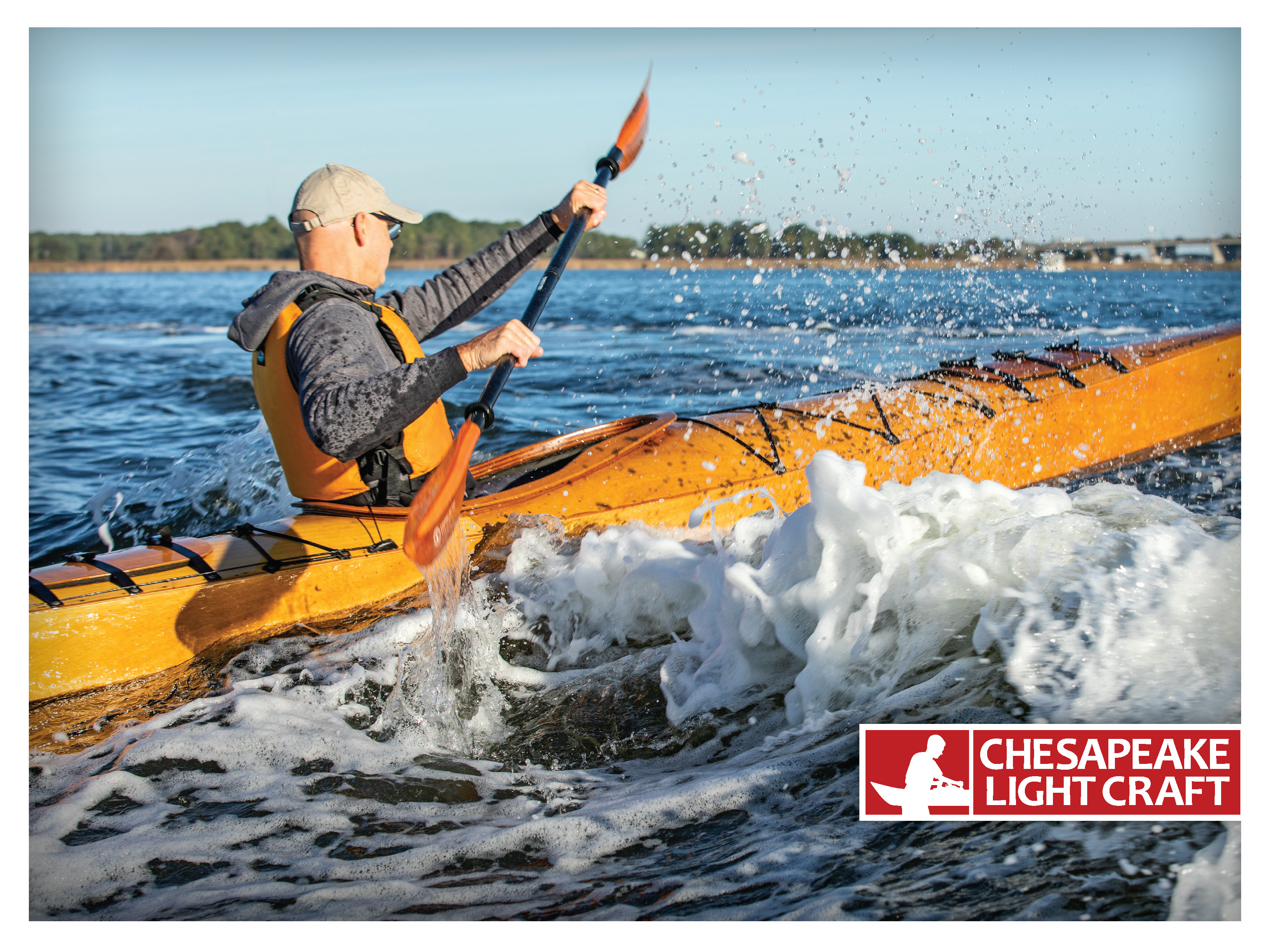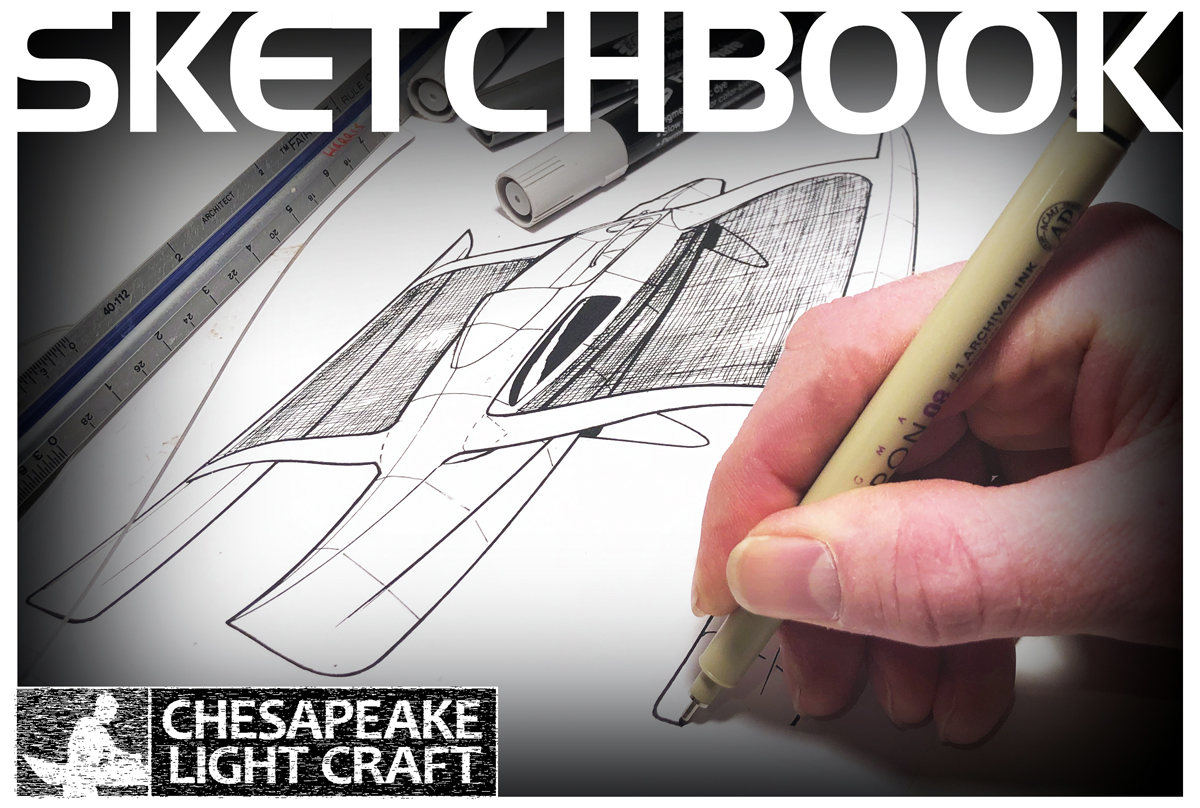Builders' Forum |
|
| ↓ Scroll to Last Comment ↓ | Forum Guidelines | Builders' Forum | |
That ever elusive kick-up rudder ...
This kickup rudder post, again (long, so read/reply if so inclined, only):
I have scoured the forum and others for smooth elegant solutions/execution of a kick-up rudder and haven't found the holy grail, yet.
I certainly understand and appreciate John's philosophy of keeping it simple, whether it is a friction star knob or a cleat to hold the downhaul in place, or some other friction.
What I am looking for, is a smooth elegant system that allows the blade to stay extended, to retract if hitting something and to immediately spring back after passing the underwater obstacle. Of course, we need the ability to manually retract the blade and keep it that way for trailer recovery or beaching. I would like to avoid having to uncleat one line and cleat the other, back and forth.
I would like this to be adaptable to most any kick-up rudder from CLC, but to be clear I am trying to get this to work well on my Skerry (I tried a variety of ways, all of which work with more or less elegance, and more or less satisfactions of use). The problem arises, partly because the rudder is already built and it was the old model with the exit hole for the rudder downhaul, way up under the tiller horn.
Best way, but temperamental is the bungee cord for downhaul, cleated to a breakaway automatic cleat for added redundancy, and an uphaul to a jam cleat. The execution with this nordic type tiller is a pain, mainly due to location of cleats being either on the aft side of the rudder post, or somewhere on the horn, even perhaps on the stern of the boat via a through hull. None feel good, work well or are sightly.
Another issue, is the anchor location of the rudder uphaul/downnhaul on the blade. Close to the rudder post, and while visually pleasing, it is poor in terms of leverage/fulcrum and force required on the line. This is not to mention that in the absence of an off center protrusion to the rudder blade (whatever that is called in nautical terms), the line is lined up with the rudder and requires tremendous force applied to move it. A slight offset is needed. With the line further down the blade, the geometry is better for decreased pull force required, but the line is submerged in water and is likely not the most hydrodynamically satisfying method, albeit one that would hardly disturb the perfect of a Skerry.
The best way, so far in terms of ease of operation, for me, has been a 1/4" bungee cord as uphaul, attached to the leading edge of the rudder blade on one end, pulled semi taught and locked in place on top of rudder post (no ham cleat as shock cord thins when pulled and weaved sheathing frays from friction.) via a 1/4" crimp doohickey (whatever those are called).
For uphaul, a line is secured to the trailing edge of the rudder and attaches to a dual block. Another line wraps around said blocks to a fixed block some 9" up the post, giving it a 3:1 pull ratio, and the exiting line goes through the tiller horn to a jam cleat on the horn. Pulling said line raises the rudder blade against the tension of the downhaul bungee, while releasing the line from the cleat allows the downhaul bungee to kick the rudder down into the extended position.
While this works well with just one line, it raises a few concerns:
- bungee may lose elasticity over time.
- Bungee is crimped and may fail.
- Attaching bungee to small diameter line in rudder blade requires unequal line bends to join the two and the thickness increases, making it prone to jams in the tight slot where the rudder blade lives. A crimp of that size also interferes with slot.
- The uphaul contraption of blocks is unsightly and more difficult to execute cleanly than is wise.
- Location of cleats to minimize the need for fairleads, blocks, etc., to limit friction while having the system operable from the cockpit is annoying, at best.
I tried to replace the bungee with a C-237 utility ext spring (9/32 X 6 X .034) from Tractor Supply, and it works well but rusts after a short time.
Help. I am sure thar more/better ideas in the multiple brains on this forum, exist. This is only for those who, like me would prefer a more elegant, but functional system, even if it requires additional costs and complexity.
If thinking one through prior to building a rudder, I was toying with the idea of an internal mechanism inside of the rudder post, with a wooden access door for servicing, but to keep the looks.
Obviously, those in the KISS category will be happy to point out one of the existing solutions in the form of friction, knobs, or single or dual lines. I respect all of it, perfectly ... I would just prefer to find a satisfying alternative. Anyone? Bueller?
6 replies:
RE: That ever elusive kick-up rudder ...
Eric wrote >> "What I am looking for, is a smooth elegant system that allows the blade to stay extended, to retract if hitting something and to immediately spring back after passing the underwater obstacle."
This requirement is the kiss of death for all simple passive solutions, as you are finding out. In my opinion, if you actually want this, it's time for an active solution. You need a reversible motor to actually move the blade up and down, a contact detector to trigger retraction, external inputs for manually raising and lowering the blade, a simple control system (either hardwired or programmable will do for something this simple, but I prefer programmable for ease of development/maintenance) and a power system.
The control algorithm would be relatively simple - move the blade up or down according to the manual inputs; if the blade is down and the contact detector triggers, raise the blade, wait some time and lower it. A possible frill would be a moisture detector so that the blade would only retract if it was underwater.
The motor and the bearing could be a simple integrated, waterproof package so that the whole thing would look like a hockey puck mounted on each side of the rudder blade axle. It could certainly be geared for more torque, but if you use proper sealed waterproof ball bearings instead of just a bushing you can probably get away with a direct drive since the rudder blade is so light. You may need to ass weight at the top of the blade to balance it.
The power/control unit would mount somewhere in the boat. It could be quite small, especially if the battery was separate. The connection to the rudder would be a single cable routed however it would be convenient. A small LiFePO battery would provide power for weeks at a time and could be recharged with a small solar panel on the boat.
That's my smooth, elegant solution. Note that you might be able to get ideas from outboard motor mounts that allow motors to be raised in shallow water to save the props.
Laszlo
RE: That ever elusive kick-up rudder ...
OK, so not the kiss of death for all simple passive solutions. Mark's boat's solution (posted while I was typing) is pretty slick, especially if the boat never goes fast enough that water resistance is mistaken for an impact (that would definitely not be a problem for a Skerry).
Laszlo
RE: That ever elusive kick-up rudder ...
I have had a sailboat rudder made of wood with "down haul w/bungee" on the leading edge to allow it to kick up on hitting a mild obstruction and retract. My Y-Flyer has an aluminum rudder that did similar but was just heavy.
RE: That ever elusive kick-up rudder ...
You can find ss springs at Grainger. I tried springs for my Skerry Raid rudder .....all proved unsatisfactory. Use your oar over the stern to steer with or cast a round lead weight, cut it in half, and sandwich the rudder between. Mark has the best idea.
RE: That ever elusive kick-up rudder ...
Thank you, Mark, Lazlo!, Grumpy and Robert Yes, I haven't tried that weighted rudder option, yet ... probably worth a shot since I experimented with all the other options. It seems relatively easy to implement, also (famous last words); It will have to wait a couple of weeks as I am moving, next week, but will definitely give it a go before the end of August.
Lazlo, your idea appeals to the geek in me, even though it very well might be going overboard on a Skerry. What's not to like about mixing electric and water, have multiple points of potential failure, BUT oh, the satisfaction of watching your rudder blade dance a well choreographed routine with smoothness and grace! Why keep it simple when you can go all out?! Definitely will be my winter project! Your post made me wonder about using the gearing/motor combo of an old Milwaukee drill. Would need to add remote speed controller. Otherwise, speed or torque is there, already. To make the parts fit within the rudder post might be an interesting exercise. Chain and sprocket, or belt and pulley to drive the blade ... belt is appealing but will likely slip in water. Chain is heavy and might rust. Just might be fun to experiment. You definitely peaked my interest and I have adopted a new winter project, it seems.
Thank you all for chiming in with experience and ideas! Cheers!













RE: That ever elusive kick-up rudder ...
» Submitted by Mark N - Tue, 8/8/23 » 7:11 AM
I owned a Nimble Arctic 25 for seventeen years that had both a centerboard and rudder board. (It had a shallow draft rudder with an internal board that could be lowered for more control at low speeds). Both boards were unballasted but had just enough weight added that they would stay down at speed but would pop up if they hit something. This is certainly a KISS approach that proved reliable. In this picture, you can see the round weight on the bottom of the rudder board.
https://flic.kr/p/24bJ39a